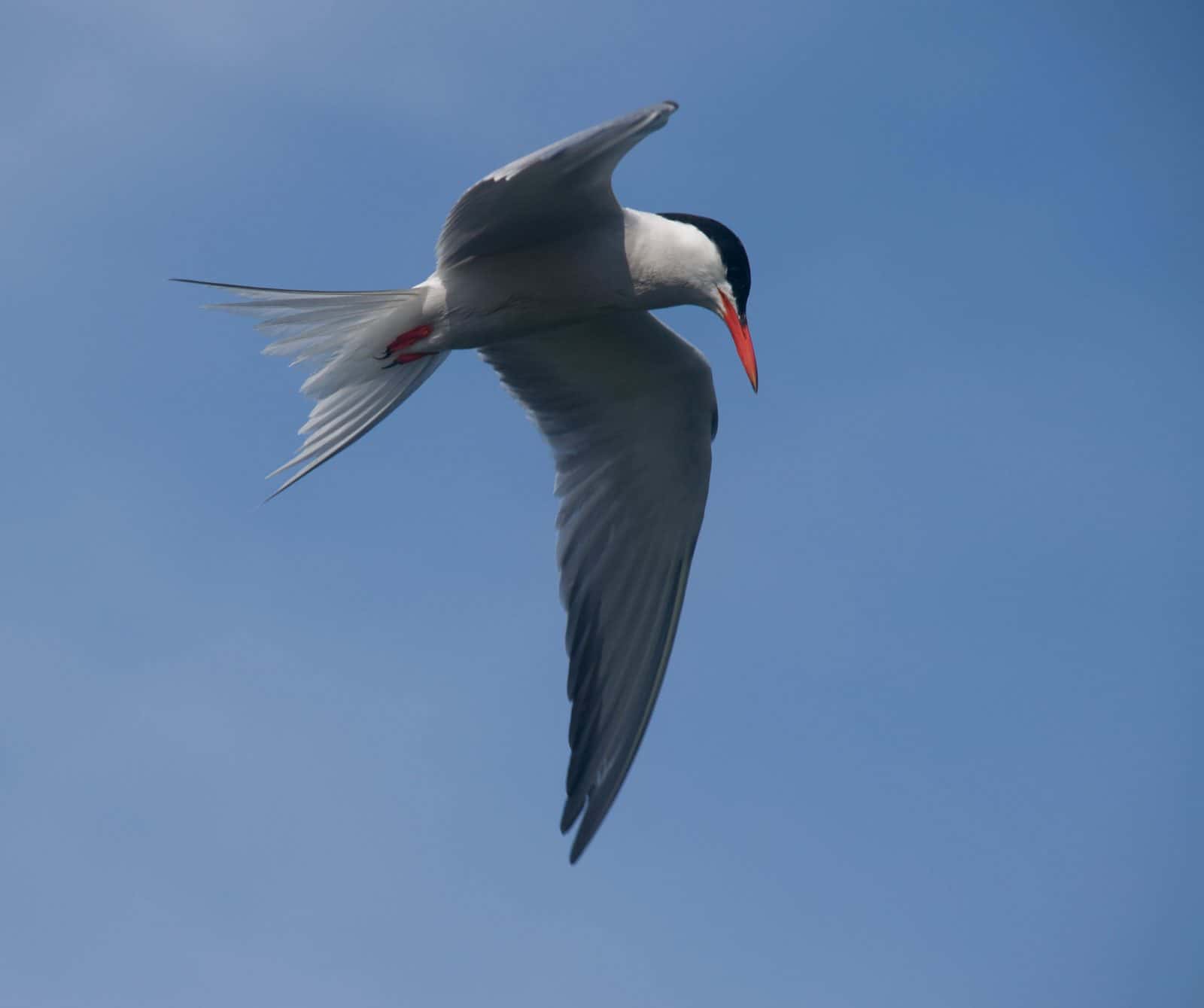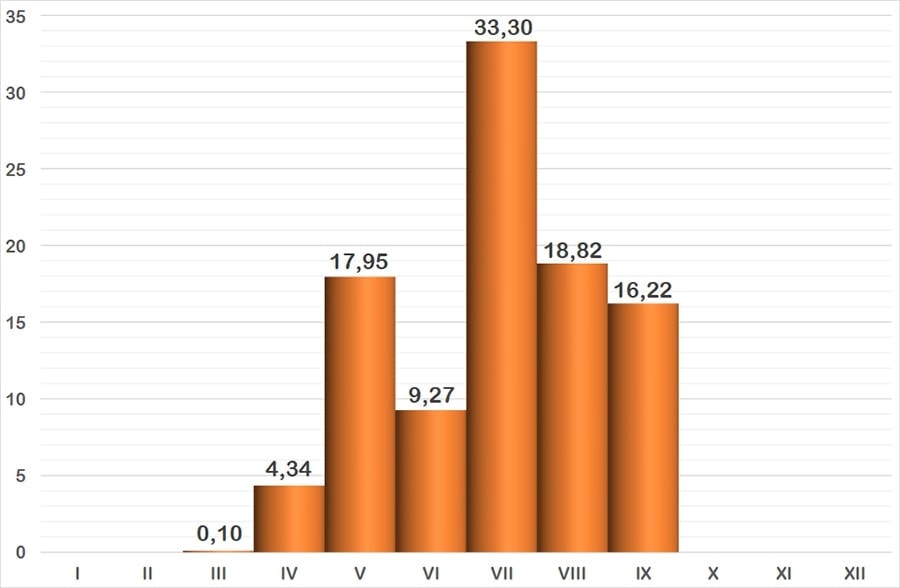Slightly larger than the Black-headed Gull, which is a reference for identification, this gull has longer, red legs and a thicker, blunter, red bill with a black band at the end. In summer it has a black hood that covers its nape and a white eye ring makes it easily distinguishable from the black-headed gull. In flight it is unmistakable as it is the only one with white primary feathers, which is very noticeable. In winter the black hood disappears and is replaced by black patches behind the eyes and on its nape.

La imagen es autoría de Kevin Faccenda. Licencia Creative Commons con algunos derechos reservados.
Species 1
Common Tern
Scientific name
Family 2
Taxonomic Affinity Group 3
Phenology 4
It is a breeding bird in the ‘Salinas de Poniente’, so it has a summer pattern which is clearly reflected in the graph. The maximum probability for sighting is reached in July, contributed to by the incorporation of the young from that year’s clutches.

The graph represents the probability of seeing a species during the year, grouped into months. The vertical axis indicates the percentage value. Each of the bars expresses its value. The horizontal axis represents the months: I = January, II = February, III = March, IV = April, V = May, VI = June, VII = July, VIII = August, IX = September, X = October, XI = November and XII = December.
Observation recommendations
It can be easily observed capturing its prey near the shore on the beach and even in the ‘Salinas Viejas’, and it is usually observed while resting, normally as part of a flock of gulls with other terns.
Observation areas where we can find it
Notes
[1] The names used are from the list of birds of Spain, drawn up by SEO/BirdLife and updated to 2019 (https://seo.org/listaavesdeespana/). The reference is: Rouco, M., Copete, J. L., De Juana, E., Gil-Velasco, M., Lorenzo, J. A., Martín, M., Milá, B., Molina, B. & Santos, D. M. 2019. Checklist of the birds of Spain. 2019 edition. SEO/BirdLife. Madrid.
[2] The taxonomic family to which it belongs is indicated.
[3] Traditionally, waterbirds have been grouped according to their taxonomy or “taxonomic affinity”, i.e., when some birds coincide in certain features that allow them to be classified scientifically, but without leaving the rigour of science, they are put together in these groups so that they can be easily recognised. These groups are the following: Greves (belonging to the Podicipedae family), Herons and Similar (includes the families: Ardeidae -Herons- Ciconiidae -Storks- and Threskiornithidae -Ibises and spoonbills-), Ducks (the whole Anatidae family), Coots and Similar (the family Rallidae corresponding to Rails, Gallinules and Coots), Cranes (also with only one family, the Gruidae), Waders , a heterogeneous group, the most diverse of this classification, includes the families Burhinidae (Stone-curlews), Haematopodidae (Oystercather), Recurvirostridade (Avocets and Stilts), Glareolidae (Pranticole), Charadriidadea (Plovers), Scolapacidae and finally Gulls and Similar (the recently unified family Laridae, i.e. Gulls and Terns).
[4] Phenology studies the relationship between the cycles of living beings and meteorological factors, and in our latitude these factors manifest themselves as variations throughout the year, thus relating the seasons to the birds’ cycles (breeding, migratory journeys, etc.) The graph shows the probability of seeing a bird depending on the month. It uses data from 48 bird censuses carried out between October 2016 and September 2018. The method used is that of a census route with sampling stations, with a total count on the sheet of water.
